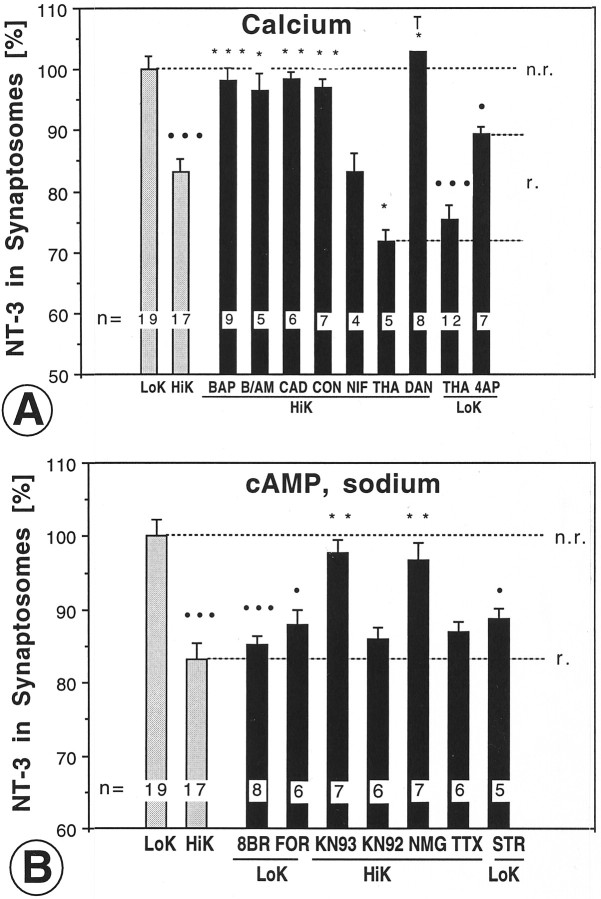Fig. 3.
Manipulation of NT-3 release from axon terminals by modulation of calcium, other ions, or second messengers.A, High K+-induced release of NT-3 was abolished by BAPTA (BAP), BAPTA/AM (B/AM), cadmium chloride (CAD), ω-conotoxin GVIA (CON), dantrolene (DAN), but not nifedipine (NIF). Release of NT-3 was elicited by thapsigargin (THA), both in high and low K+, and to a lesser extent by 4-aminopyridine (4AP). B, Release of NT-3 was induced by 8-bromo-cAMP (8BR) or forskolin (FOR). High K+-induced release of NT-3 was reduced by the CaM kinase II inhibitor KN-93 (KN93), but not by the inactive analog KN-92 (KN92). Replacing extracellular sodium with N-methyl glucamine (NMG) significantly reduced release of NT-3 induced by high K+. High K+-induced release of NT-3 was unaffected by tetrodotoxin (TTX) treatment. The Na/K ATPase inhibitor strophanthidin (STR) induced release in low K+ buffer. The number of independent experiments is indicated on bars. Error bars indicate SEM. All experimental data points were calibrated in the same batch by obtaining control data without the pharmacological agent. r., release;n.r., no release. Statistical significance compared with LoK (•) or HiK (*) was determined by ANOVA with p ≤ 0.05 (* or •), p ≤ 0.01 (** or ••), andp ≤ 0.001 (*** or •••).

